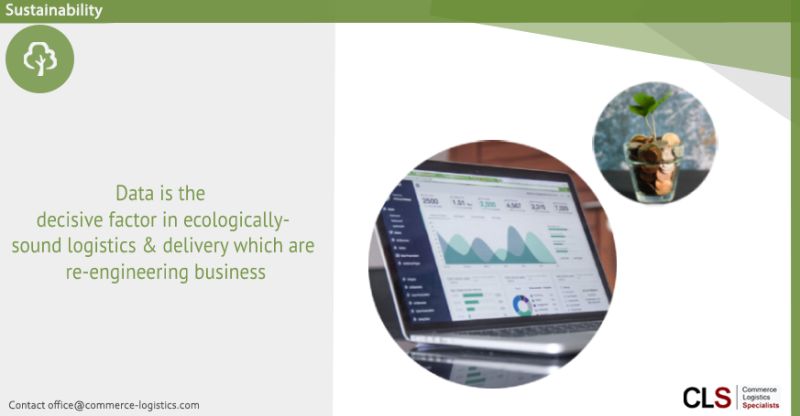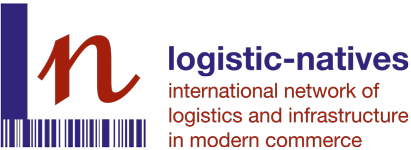Data is the decisive factor in ecologically-sound logistics & delivery which are re-engineering business

The ongoing #digitalization of the #retail sector and delivery of goods has led to the #harmonization of data. The mandatory exchange of data at individual shipment level and covering the merchandise they contain has become the rule, not the exception:
· Since 1 January 2021, #data on single cross-border consignments exchanged in advance between postal operators must comply with globally harmonized specifications;
· The EU Customs Data Model complements the Global Postal Data Model of the Universal Postal Union;
· Data available in advance for each individual #shipment prior to dispatch is aligned with the #transport mode, supporting the digitalization of freight and transport information;
· The development of the European “Parcel Delivery Environmental Footprint” Standard is twinning the digitalization of commercial delivery with the sustainable reduction of carbon and greenhouse gas (GHG) emissions.
𝗘𝗹𝗲𝗰𝘁𝗿𝗼𝗻𝗶𝗰 𝗳𝗿𝗲𝗶𝗴𝗵𝘁 & 𝘁𝗿𝗮𝗻𝘀𝗽𝗼𝗿𝘁 𝗶𝗻𝗳𝗼𝗿𝗺𝗮𝘁𝗶𝗼𝗻 𝗶𝘀 𝗮𝗻 𝗶𝗻𝘁𝗲𝗴𝗿𝗮𝘁𝗶𝗼𝗻𝗮𝗹 𝗽𝗮𝗿𝘁 𝗼𝗳 𝗰𝗮𝗹𝗰𝘂𝗹𝗮𝘁𝗶𝗻𝗴 𝗮𝗻𝗱 𝗱𝗲𝗰𝗹𝗮𝗿𝗶𝗻𝗴 𝗰𝗮𝗿𝗯𝗼𝗻 𝗮𝗻𝗱 𝗚𝗛𝗚 𝗳𝗼𝗼𝘁𝗽𝗿𝗶𝗻𝘁𝘀
The advance exchange of electronic information among entitled stakeholders becomes the tool for optimizing intra-logistics, enabling dynamic routing for transport and ecologically-sound delivery.
The specific emissions associated with each individual delivery item are allocated to each step in the delivery chain, making the emissions digitally visible, measurable, and therefore quantifiable. The GHG emissions and air pollutants generated by parcel logistics delivery services can be offset using appropriate digital platforms.
Consequently, in a growing and highly competitive global market allocating the real cost of the ecological footprint to the individual parcel may constitute a competitive advantage for those offering ecologically-sound solutions.
𝗠𝗲𝗮𝘀𝘂𝗿𝗮𝗯𝗹𝗲 𝗲𝗺𝗶𝘀𝘀𝗶𝗼𝗻𝘀, 𝘁𝗵𝗲 𝗰𝗼𝘀𝘁𝘀 𝗼𝗳 𝘄𝗵𝗶𝗰𝗵 𝗮𝗿𝗲 𝗮𝗹𝗹𝗼𝗰𝗮𝘁𝗲𝗱 𝗮𝘁 𝗶𝗻𝗱𝗶𝘃𝗶𝗱𝘂𝗮𝗹 𝗶𝘁𝗲𝗺 𝗹𝗲𝘃𝗲𝗹, 𝗮𝗿𝗲 𝘁𝗵𝗲 𝗯𝘂𝗶𝗹𝗱𝗶𝗻𝗴 𝗯𝗹𝗼𝗰𝗸𝘀 𝗳𝗼𝗿 𝘁𝗵𝗲 𝗻𝗲𝘅𝘁 𝗱𝗶𝗴𝗶𝘁𝗮𝗹𝗱𝗶𝘀𝗿𝘂𝗽𝘁𝗶𝗼𝗻 𝗶𝗻 𝗹𝗮𝘀𝘁 𝗺𝗶𝗹𝗲 𝗱𝗲𝗹𝗶𝘃𝗲𝗿𝘆
Algorithms that include parcel dimensions and delivery sequence per delivery tour will determine the optimal place for each parcel on automatically loaded roll containers. Electrically operated delivery vehicles can even capitalize on using “clean electricity” as a fuel as a result of GHG quota allocations. Electric vehicles become standardized, highly digitalized assets in last mile delivery.
Using “clean fuels” leads to further efficiency increases. As new business models and venture capital takes advantage of the changing market, the re-engineering of the parcel delivery sector accelerates.
Click here for the LinkedIn-Article.

Walter Trezek
Document Exchange Network GmbH

